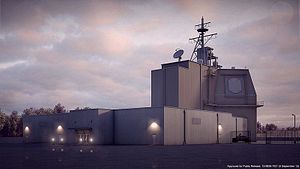On Wednesday, the Japanese Ministry of Defense announced that plans to go ahead with the deployment of a land-based ballistic missile defense installation in Akita prefecture would be canceled. Akita prefecture had been identified as a site for the deployment of one of two Aegis Ashore installations that Japan is procuring to better defend against ballistic missile threats from North Korea.
The decision to revisit the plan to deploy the system in Akita comes after months of sustained opposition from local politicians and constituents. The envisaged site was the Japanese Ground Self-Defense Force (GSDF) training area in Akita’s Araya district. Initial reports that the Japanese government had started reconsidering Akita as a deployment area came in December 2019.
The decision to scrap the Aegis Ashore deployment in Akita could delay Tokyo’s plans to have both sites up and running by 2025. Opposition to the Akita site came from public health concerns and opposition by residents to hosting a facility that would likely become a high-priority target for North Korean missiles early in a potential conflict. The political opposition to the deployment also intensified after official briefing materials on the candidate site in Akita were found to contain errors.
According to Japanese reports, the Ministry of Defense will continue surveys of areas near Akita to maintain a similar ballistic missile defense coverage as to what would have been provided by the Araya deployment. Candidate sites in Yamagata and Aomori prefectures will be examined. As many as 20 sites will be considered and the ongoing surveys will conclude by the end of May, according to Jiji Press news agency. The GSDF will operate Japan’s Aegis Ashore installations.
Aegis Ashore is a land-based version of the ship-based Aegis ballistic missile and air defense system. The system will be capable of operating Standard Missile 3 Block IIA interceptor missiles as well as Standard Missile 6 interceptors. In addition to the now-scrapped plans for a deployment in Akita prefecture, the Japanese government has identified a site at Yamaguchi prefecture for the second Aegis Ashore installation.
Japan approved plans to purchase two Aegis Ashore systems at the end of 2017, a year that saw a remarkable pace of North Korean ballistic missile testing. In August and September 2017, North Korea launched two nuclear-capable Hwasong-12 intermediate-range ballistic missiles over Japanese territory.
Two Aegis Ashore sites exist in Romania and Poland, where they were established under the Obama administration’s Phased Adaptive Approach for regional ballistic missile defense.

































